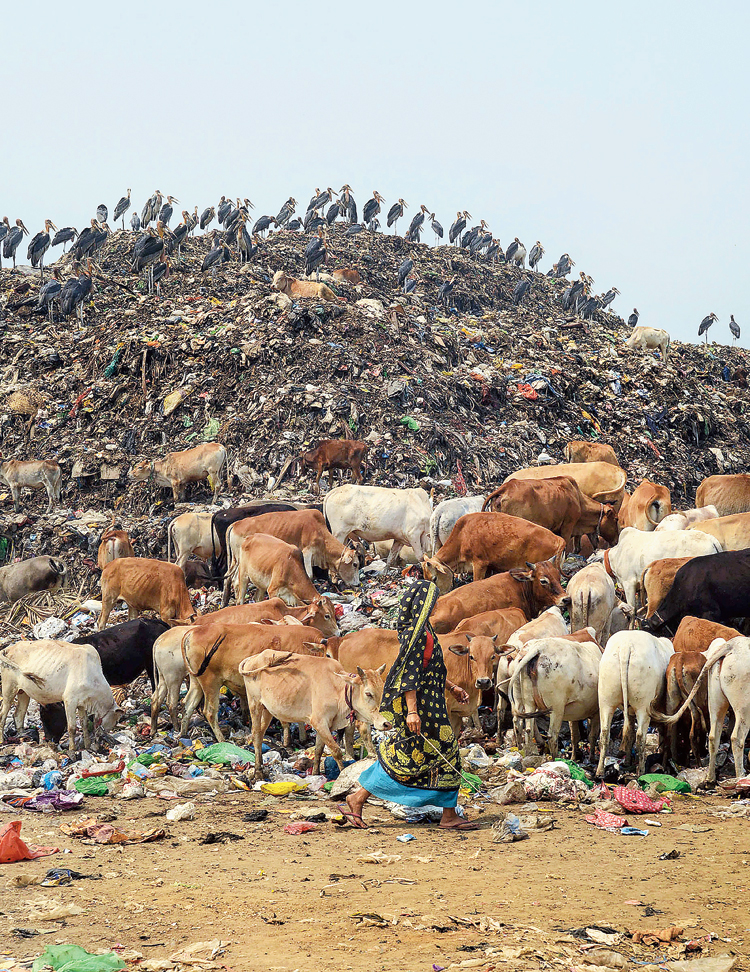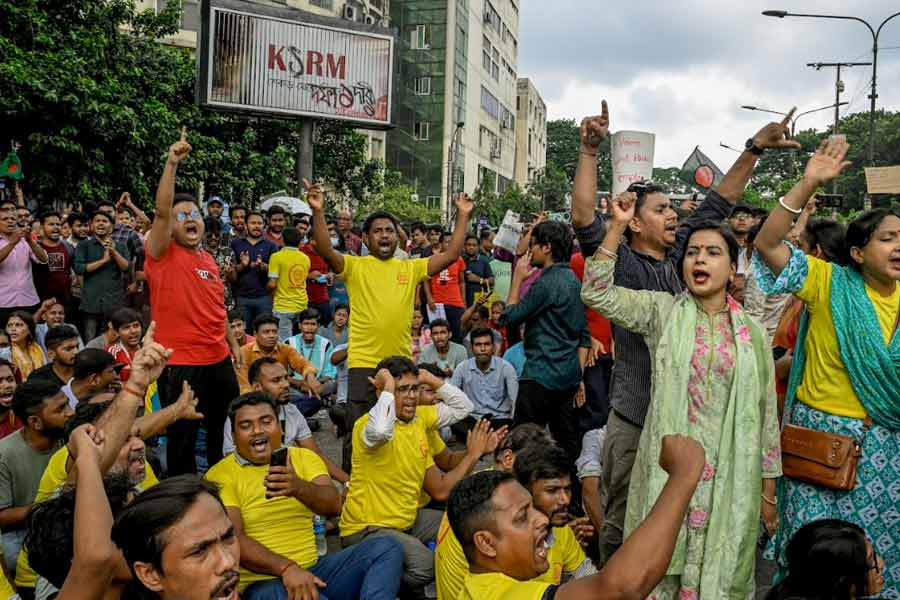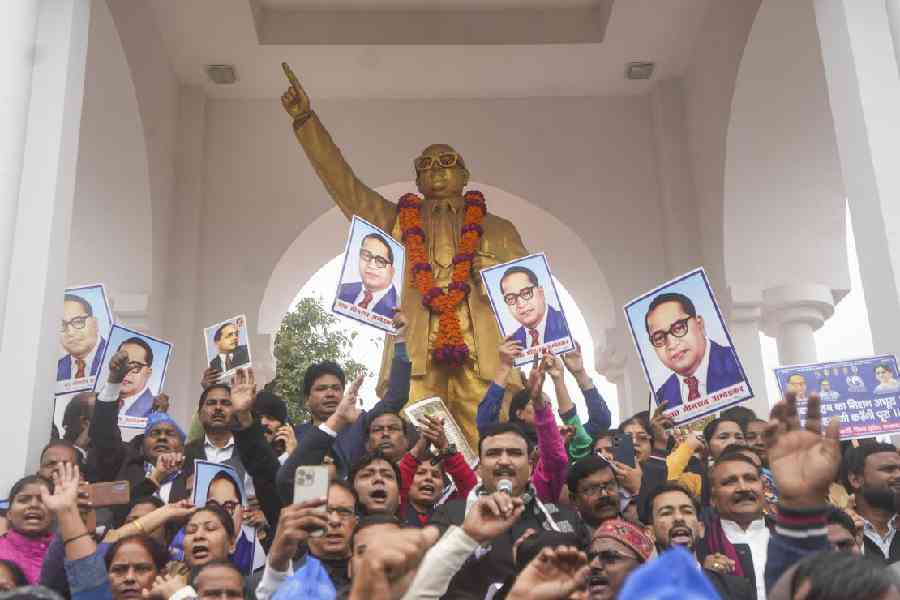Many of the 536 million animals that make up India’s livestock population are not getting adequate feed because of the lockdown and at least one state has complained that the Centre that worships the cow has turned a deaf ear to the plight.
The most visible impact has been the plunge in the sales of milk, which has triggered a vicious cycle that has wiped out the earnings farmers who are finding it difficult to afford cattle feed whose supply itself has been affected.
Any disruption in income from milk is expected to hamper the economic health of 23 per cent of marginal farmers in India.
While the disruption in the supply chain has affected the domestic consumption of milk, both dairies and sweetshops are closed because of the lockdown, leaving countless litres unused all over the country. Even the manufacturing of milk products at the industrial level has largely stopped.
Sunil Kedar, Maharashtra’s minister for animal husbandry and dairy development, told The Telegraph: “The situation is getting really worrisome. In Maharashtra alone, at least 10 lakh litres of milk are surplus everyday. The state government has worked out a plan to purchase the surplus stock and convert it into milk powder. We want the Rs 400-crore project to be shared equally by the Centre and the state. I am sorry to say no help has so far come from the Centre.”
The minister added: “I first wrote to Giriraj Singh, Union minister for animal husbandry, dairy and fisheries. When no response came forth, I spoke to him, pleading for Rs 200 crore. He was not very enthusiastic but promised to look into the matter. I then wrote to Nitin Gadkari, who is from Maharashtra and a top minister in the Modi government. Nothing happened.
“I am grateful to my chief minister Uddhav Thackeray who readily agreed to sanction Rs 200 crore. We need that kind of leadership in these times of unprecedented crisis.”
The country has 142 million cows, according to the livestock census of 2019. Giriraj is one the most prominent faces of Hindutva in the country and an unabashed champion of gau raksha (cow protection), among the foremost passions of the Sangh parivar.
There has been so far no structured demand from the Sangh parivar outfits or the cow-protection groups across the country for a special package to ensure the safety of livestock and preservation of milk. According to National Dairy Development Board, India produced 188 million tones of milk daily in 2019.
The letter written by the Maharashtra minister to the Centre says: “Most of the private milk collection centres had been shut down due to a reduction in demand for milk and milk products, resulting in issue of marketing of milk and direct loss of revenue to the poor milk producers. The lockdown due to the Covid-19 crisis is a sudden blow on the rural economy, resulting in loss of income of poor dairy businessmen which is affecting cattle feeding. lf this situation continues, this will affect milk production capacity of the cattle.”
It adds: “At present in Maharashtra, all the cooperatives are already possessing excess milk collected by them and the storage capacity is exhausted. Approximately 10 lakh litres milk a day are surplus. This is going to impact the income of the landless labour and livestock owners, ultimately compromising the health of livestock due to the worsening the feeding practices.”
Announcing the plan to procure the excess milk, the letter said: “We will convert it into skimmed milk powder. This will ensure the regular purchase of milk from the animal rearers at reasonable prices by the Government agencies enabling them to feed the cattle properly. lt is proposed that the Government of Maharashtra will purchase the milk at Rs 25 per litre. When the situation will be normal, the skimmed milk will get demand due to demand-supply gap and the expenditure incurred will be recovered gradually.”
According to the livestock census of 2019, India’s 536-million livestock population includes, besides the 142 million cows, 142 million cows, 110 million buffaloes, 149 million goats, 74 million sheep and 9 million pigs. This apart, poultry population was put at 851 million.
The Centre has been flooded with complaints from farmers about non-availability of animal feed. The department of animal husbandry and dairying found merit in the complaints and found out
that one of the reasons was the inability of trucks carrying the feed to move between states. The department last week wrote to all the state governments to ensure permission to trucks with animal feed to move on roads, two officials said.
“State police were stopping the trucks carrying animal feed at various places. The department of animal husbandry and the Union home ministry have written separately to the states to allow animal feed vehicles to move. The situation is improving,” the official said.
Chander Datt, principal scientist at the National Dairy Research Institute at Karnal in Haryana, said cows and buffaloes kept in the farms survive mainly on the feed. The availability of feed has declined by about 40 per cent in the past few days, he said.
“The cows and buffaloes which are giving over 10 litres of milk each a day and the calf need feed concentrate, which is mainly a mixture of grains and fibre. Chickens in farms entirely depend on feed. These animals are facing a shortage of feed,” Datt said.
Datt said that stray animals in urban areas face a higher possibility of starvation because they mainly survive on human benevolence
The UN’s Food and Agricultural Organisation (FAO) had warned of a reduction in animal feed because of supply chain disruptions linked to the lockdown.
“We are already challenges in terms of logistics involving the movement of food and the pandemic impact on livestock sector due to reduced access to animal feed,” the FAO said through a set of questions and answers on its website.











